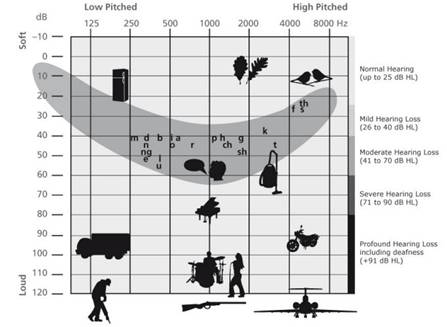What Is Hearing Loss
Hearing Loss
Hearing loss, also known as hearing impairment, is a partial or total inability to hear. Hearing loss may occur in one or both ears. In children hearing problems can affect the ability to develop speech and language, in adults it can cause work and relationship related difficulties. In the elderly or those living in remote environments, hearing loss can result in isolation and loneliness.
Hearing loss can be temporary and/or permanent, thus requiring different strategies of management. Hearing aids and cochlear implants are the most common devices used to remedy hearing loss however, they aren’t the only strategy for hearing loss, if medical management is required then your GP is likely to be involved, for example, middle or external ear infections. If this strategy fails it is possible that you could be referred for an ENT opinion or even surgical management.
Hearing loss can be caused by a number of factors, most commonly, genetics, ageing, workplace or recreational noise exposure, ear infections, birth complications, trauma to the ear, even medications or toxins. A common condition that results in hearing loss is chronic ear infections. Infections such as Rubella during pregnancy can also cause a permanent hearing loss.
Hearing loss is diagnosed when an audiologist finds that the patient is unable to hear 25 decibels or greater in at least one ear. Testing for hearing loss is recommended for all newborns here in Tasmania, almost two babies in every 100 will be born with profound hearing loss. Hearing loss can be categorised as mild, moderate, severe, or profound. Each level of hearing loss requires a different audiological management plan.
Early identification and individualised audiological support is particularly important in children born with or who have acquired a permanent hearing loss. For many, hearing aids and/or cochlear implants are required. Auditory verbal therapy and lip reading is also useful. Access to hearing aids and cochlear implants, however, is limited in many areas of the world.
Understanding Hearing Loss
Audiogram – Hearing Test Results
What is an audiogram?
An audiogram is a graphic representation of your hearing ability. During a hearing test your audiologist will check your hearing at different frequencies and the results are recorded on an audiogram. Your audiogram is very important, it allows the audiologist to determine the degree and configuration of your hearing loss. This graphical information allows the audiologist to determine the likely cause(s) of your hearing loss and consequently, she/he can suggest the most appropriate management options available for you.

How to read your audiogram
The Frequencies
The horizontal scale at the bottom (sometimes found at the top) indicates the different frequencies we test, these also include half octave frequencies (light grey lines). The low frequencies (the hum of an engine/fridge) are located on the far left, the high sounds (the twitter of a bird, high pitched beeps) are identified on the far right.
The Loudness Intensity Level
The vertical scale indicates the loudness (output) level of the test frequency, from soft to loud. Values are given in decibels, abbreviated as dBHL. The healthy human ear begins to perceive sounds starting at 0 dBHL and reaches the threshold of pain at 120 dBHL. Patients with sensori-neural hearing loss typically have a much lower threshold of pain than an individual with normal hearing thresholds.
Degrees of Hearing Loss
Mild hearing loss
Soft noises/speech are not heard. Understanding speech is difficult in a medium to loud environment. Softly spoken individuals, including little children are most difficult to understand.
Moderate hearing loss
Soft and moderately loud speech is not heard. Understanding speech becomes more difficult in most situations, especially with competing speech or if background noise is present.
Severe Hearing Loss
Conversations have to be conducted loudly and are usually more dynamic. Group conversations are barely possible, visual cues become increasingly important and without hearing aids these individual require enormous effort to be able to understand.
Profound Hearing Loss
Only very loud noises or sounds are heard. Without a power hearing aid device, cochlear implant or sign language this individual would find it almost impossible to communicate or participate in everyday activities, even with intense effort.
The Sound of Speech
Human speech consists of vowels and consonants at different loudness and frequency levels. They are recorded on the audiogram as a so-called “speech banana”. It is an easy way to check whether the entire spectrum of speech is still audible and how a person’s hearing changes with time.

Balance disorders and Complications
A balance disorder is a disturbance that causes an individual to feel unsteady, giddy, woozy, or have a sensation of movement, spinning, or floating. An organ in our inner ear, the labyrinth, is an important part of our vestibular (balance) system. The labyrinth interacts with other systems in the body, such as the visual (eyes) and skeletal (bones and joints) systems, to maintain the body's position. These systems, along with the brain and the nervous system, can be the source of balance problems.
Three structures of the labyrinth, the semicircular canals, let us know when we are in a rotary (circular) motion. The semicircular canals, the superior, posterior, and horizontal, are fluid-filled. Motion of the fluid tells us if we are moving. The semicircular canals and the visual and skeletal systems have specific functions that determine an individual's orientation. The vestibule is the region of the inner ear where the semicircular canals converge, close to the cochlea (the hearing organ). The vestibular system works with the visual system to keep objects in focus when the head is moving. Joint and muscle receptors also are important in maintaining balance. The brain receives, interprets, and processes the information from these systems that control our balance.
BPPV (benign paroxysmal positional vertigo)
Also known as positional vertigo, usually very easy to remedy once identified (requires a case history and hearing assessment) can be managed successfully at Tasmanian Hearing.
Vestibulopathy
Occurs when the balance portions of the inner ears are damaged. The symptoms typically include imbalance and visual disturbance. The imbalance is worse in the dark, or in situations where footing is uncertain (proprioception complications). Spinning vertigo is unusual.
